Plastic welding stands as a sophisticated manufacturing process where thermoplastic materials merge through heat application, creating permanent molecular bonds. Unlike traditional bonding methods, it enables seamless fusion without additional fasteners or adhesives.
This transformative technique emerged during the mid-20th century, paralleling the plastics industry boom. Early applications focused primarily on basic repairs, yet rapid technological advancements propelled it into a cornerstone of modern manufacturing processes.
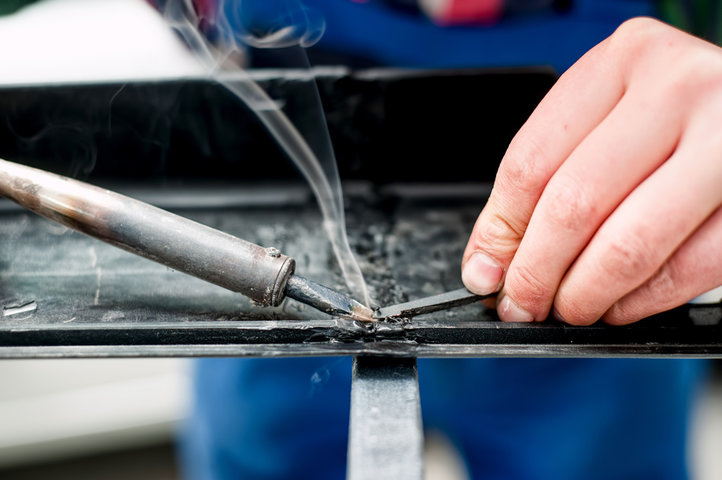
Industry Impact
Modern manufacturing relies heavily on plastic welding across diverse sectors:
Automotive manufacturers leverage ultrasonic and laser welding techniques for producing lightweight, durable components, reducing vehicle weight by up to 30%.
Medical device production employs high-frequency welding methods to create sterile, precise equipment assemblies under strict regulatory standards.
Construction industries utilize hot plate welding for large-scale pipe systems, ensuring leak-proof infrastructure development across urban areas.
Economic Significance
Plastic welding delivers substantial economic benefits:
Reduces production costs by 40-60% compared to traditional assembly methods
Minimizes material waste through efficient joining processes
Extends product lifecycles through effective repair capabilities
Enables rapid prototyping and custom manufacturing solutions
This technology continues evolving, incorporating advanced automation and precision control systems. We observe increasing adoption across industries, solidifying its position as an essential manufacturing process.
Pro Tip: Modern plastic welding techniques achieve bond strengths comparable to parent materials, making them ideal for structural applications.
Materials for Plastic Welding
Plastic welding is versatile, allowing the joining of various thermoplastics and some specialized materials. Choosing the right plastic for welding is crucial to ensure durable, strong bonds that meet application requirements. Below are common thermoplastics and other materials suitable for welding processes.
Primary Thermoplastics
The following thermoplastics demonstrate excellent weldability characteristics:
| Material | Common Applications | Key Properties |
| ABS (Acrylonitrile-Butadiene-Styrene) | Automotive parts, Electronics housing | High impact resistance, Good dimensional stability |
| PC (Polycarbonate) | Safety equipment, Medical devices | Exceptional durability, Optical clarity |
| PE (Polyethylene) | Storage containers, Piping systems | Chemical resistance, Flexible strength |
| PET (Polyethylene Terephthalate) | Packaging, Textile fibers | Superior barrier properties, Recyclability |
| PMMA (Polymethyl Methacrylate) | Display panels, Lighting fixtures | Outstanding optical properties, Weather resistance |
| PP (Polypropylene) | Vehicle bumpers, Industrial containers | Chemical inertness, Heat resistance |
| PVC (Polyvinyl Chloride) | Construction materials, Cable insulation | Fire resistance, Cost-effectiveness |
Specialty Materials
Several specialized polymers offer unique welding capabilities:
Nylon/Polyamide (PA)
Delivers exceptional mechanical strength
Maintains dimensional stability under heat
Excels in high-wear applications
Weldable Polyurethane (PUR)
Offers flexibility in joining techniques
Requires specific welding parameters
Suits specialized industrial applications
Material Considerations
Key factors influencing material selection:
Temperature Resistance
Operating temperature range
Heat deflection properties
Thermal expansion characteristics
Chemical Compatibility
Environmental exposure requirements
Chemical resistance needs
Stress cracking resistance
Important Note: Always verify material compatibility before welding. Similar materials typically produce stronger bonds through polymer fusion.
Non-Weldable Materials
Some materials resist traditional welding methods:
These materials typically require alternative joining methods like adhesive bonding or mechanical fastening.
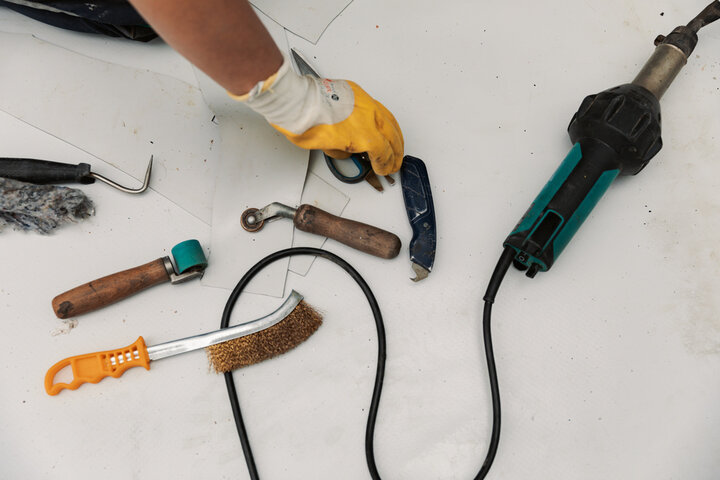
Plastic Welding Methods
Several techniques are used in plastic welding, each offering unique advantages for specific materials and applications. Below are the most common plastic welding methods, providing an overview of the process, key benefits, and typical use cases.
Hot Gas Welding
Process Overview
Hot gas welding involves the use of a specialized heat gun that directs a stream of hot air to the weld joint, softening both the plastic parts and the filler rod. The plastic melts and bonds as the materials cool.
Advantages and Disadvantages
Advantages: Simple, inexpensive, portable equipment; suitable for on-site repairs; good for large plastic structures.
Disadvantages: Slow process; not ideal for thick plastics; requires skilled operators to control heat.
Applications
Hot gas welding is used for fabricating tanks, pipes, and containers, particularly in chemical and water treatment industries.
Ultrasonic Welding
Process Overview
Ultrasonic welding uses high-frequency mechanical vibrations to generate heat through friction. The plastic components are pressed together, and the friction between them melts the material, forming a bond.
Advantages and Disadvantages
Advantages: Fast process; no external heat needed; suitable for high-volume production; creates clean, strong joints.
Disadvantages: Limited to small or thin parts; requires precise alignment and machinery; high initial equipment cost.
Applications
Commonly used in electronics, automotive parts, and medical devices, ultrasonic welding is ideal for assembling small, intricate components.
Laser Welding (Laser Beam Welding)
Process Overview
Laser welding involves directing a focused laser beam along the joint line of plastic parts. The laser melts the material at the joint, which solidifies to create a strong bond.
Advantages and Disadvantages
Advantages: Precise control; minimal post-weld processing; clean welds with little to no flash.
Disadvantages: High equipment costs; limited to plastics less than 12.7 mm thick; potential for brittle joints.
Applications
Laser welding is widely used in industries requiring high precision, such as medical devices, electronics, and automotive components.
Spin Welding
Process Overview
Spin welding generates heat by rotating one plastic part against another. The friction between the surfaces melts the plastic, which then cools and solidifies to create a bond.
Advantages and Disadvantages
Applications
Used in the production of round or cylindrical components like plastic caps, containers, and automotive filters.
Vibration Welding (Friction Welding)
Process Overview
Vibration welding, also known as friction welding, uses controlled mechanical vibrations to create heat at the joint between two plastic parts. The heat melts the plastic, forming a bond when the material cools.
Advantages and Disadvantages
Advantages: Works with irregular shapes; no filler materials needed; suitable for large or complex parts.
Disadvantages: High equipment cost; limited to specific plastic types; vibrations can cause misalignment.
Applications
Vibration welding is common in the automotive, appliance, and aerospace industries for joining complex or large parts.
Hot Plate Welding
Process Overview
Hot plate welding involves heating the surfaces of two plastic parts using a heated plate. Once the surfaces melt, the parts are pressed together, forming a weld as they cool.
Advantages and Disadvantages
Advantages: Reliable and simple; suitable for large plastic components; capable of joining dissimilar plastics.
Disadvantages: Slower than other methods; requires frequent maintenance of the hot plate; limited to flat or simple surfaces.
Applications
Hot plate welding is often used in the production of automotive parts, large tanks, and household appliances.
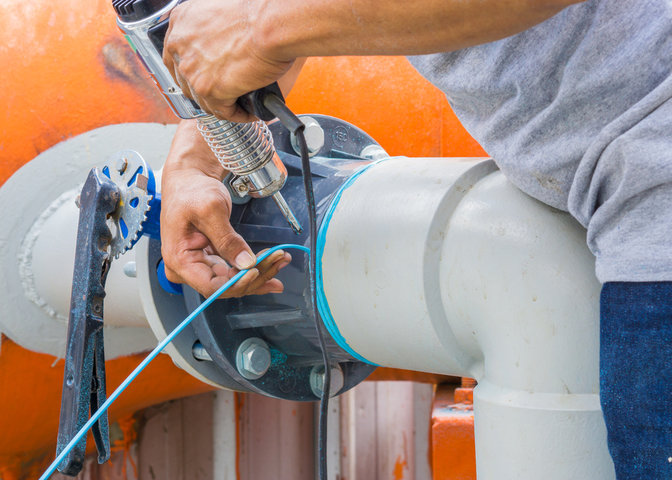
High-Frequency Welding (Radio Frequency Welding)
Process Overview
High-frequency welding uses an electromagnetic field to heat the plastic parts. The high-frequency energy causes the molecules in the plastic to oscillate, generating heat that melts the material, creating a bond.
Advantages and Disadvantages
Advantages: Fast and efficient; excellent for thin or film plastics; capable of complex shapes.
Disadvantages: Expensive equipment; safety concerns due to electromagnetic radiation; limited to certain plastics like PVC.
Applications
High-frequency welding is commonly used for sealing plastic films, creating medical bags, and welding PVC pipes.
Comparison of Plastic Welding Methods
| Method | Advantages | Disadvantages | Typical Applications |
| Hot Gas Welding | Simple, portable, cost-effective | Slow, not ideal for thick plastics | Tanks, pipes, chemical containers |
| Ultrasonic Welding | Fast, clean, no external heat | High cost, limited to small parts | Electronics, medical devices |
| Laser Welding | Precise, minimal post-processing | Expensive, limited thickness | Automotive, electronics |
| Spin Welding | Fast, strong joints | Limited to circular parts | Filters, caps, containers |
| Vibration Welding | Works with large parts, no fillers needed | High cost, complex machinery | Automotive, aerospace |
| Hot Plate Welding | Reliable, joins dissimilar plastics | Slower process, frequent maintenance | Large tanks, automotive components |
| High-Frequency Welding | Fast, good for films and thin materials | Expensive, safety concerns | Medical bags, PVC piping |
Plastic Welding Process
The plastic welding process requires precise control over several stages to ensure strong, reliable bonds. From preparing the surface to cooling the final weld, each step plays a crucial role in achieving a durable weld. Below, we explore the essential stages of the plastic welding process.
Surface Preparation
Proper surface conditioning establishes the foundation for strong molecular bonds.
Cleaning Protocol
| Step | Method | Purpose |
| Initial Cleaning | Warm water wash | Remove surface contaminants |
| Degreasing | MEK/Solvent application | Eliminate oils and residues |
| Drying | Lint-free cloth | Ensure moisture-free surface |
Surface Treatment
Optimal surface preparation enhances bonding strength through:
Mechanical abrasion using 80-grit sandpaper for improved molecular adhesion
Paint removal from joining surfaces to ensure direct material contact
UV degradation elimination through surface grinding
Pro Tip: Clean surfaces immediately before welding to prevent contamination buildup.
Heating Process
Temperature control plays a crucial role in achieving optimal fusion results.
Temperature Requirements
Standard Operating Ranges:
Thermoplastics: 200-300°C (392-572°F)
High-Performance Materials: 300-400°C (572-752°F)
Engineering Plastics: 250-350°C (482-662°F)
Method-Specific Controls
Different techniques require specific heating approaches:
Direct Heat Methods
Indirect Heat Methods
Pressure Application
Pressure ensures proper material flow and molecular bonding during fusion processes.
Critical Factors
Cooling Management
Proper cooling significantly impacts final weld strength and appearance.
Cooling Parameters
Time Requirements:
Small components: 3-5 minutes
Medium assemblies: 5-10 minutes
Large structures: 10-15+ minutes
Optimization Techniques
Natural Cooling
Controlled Cooling
Temperature gradient management
Stress reduction protocols
Environmental control systems
Quality Verification
Visual inspection procedures
Strength testing protocols
Dimensional stability checks
Important: Never accelerate cooling through artificial means. Natural cooling ensures optimal molecular alignment.
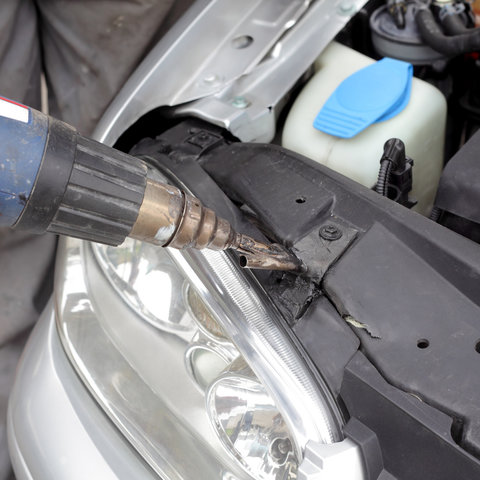
Types of Plastic Welds
Different types of plastic welds are used depending on the geometry of the parts and the specific requirements of the application. Each weld type offers unique characteristics for strength, appearance, and ease of fabrication. Understanding these common weld seam geometries is crucial to selecting the appropriate method for a given project.
Common Weld Seam Geometries
Comparative Analysis
| Weld Type | Strength Rating | Typical Applications | Complexity Level |
| Fillet Weld | High | T-joints, Corner joints | Moderate |
| Interior Corner | Medium-High | Confined spaces | High |
| Exterior Corner | High | Exposed edges | Moderate |
| X-Seam | Very High | Thick materials | Complex |
| V-Seam | High | Butt joints | Moderate |
| Lap Seam | Medium | Sheet materials | Simple |
Detailed Configurations
Fillet Weld
A fillet weld joins two plastic parts that meet at a T-joint. It is often used when one piece is perpendicular to another. This weld type provides strong joints and is frequently used in structures requiring high mechanical strength.
Interior Corner Seam
An interior corner seam is applied in hard-to-reach areas, often between two surfaces that form a concave angle. This seam is ideal for internal structures or parts that must fit tightly inside enclosures.
Exterior Corner Seam
The exterior corner seam is used when two plastic parts are joined at an outer corner, forming a convex angle. It runs along the exposed edge, making it perfect for applications requiring a smooth, clean finish.
X-Seam (Double-V)
The X-seam, also known as a double-V seam, is created by beveling both sides of two plastic parts. It allows for deep penetration, ensuring strong joints in thick plastic components. This seam is ideal for applications where maximum weld strength is essential.
V-Seam
A V-seam is formed by beveling the edges of two plastic parts at an angle, creating a V-shaped groove. The V-seam is often used in butt joints, providing a secure bond between two flat pieces of plastic.
Lap Seam
A lap seam is made by overlapping two plastic sheets, with the weld seam placed along the upper exposed edge. This type of seam is common in applications involving plastic films or thin materials.
Selection Guidelines
Consider these factors when choosing weld types:
Load Requirements
Static loads: Lap seams, V-seams
Dynamic loads: X-seams, Fillet welds
Multi-directional stress: Interior corner seams
Material Thickness
Thin sheets (<3mm): Lap seams
Medium thickness (3-10mm): V-seams, Fillet welds
Thick materials (>10mm): X-seams
Access Considerations
Limited access: Interior corner seams
Full access: Exterior corner seams
Automated welding: Lap seams, V-seams
Expert Tip: Match weld geometry to stress patterns. Proper selection significantly impacts joint performance.
Application-Specific Recommendations
High-Stress Applications:
Use X-seams for maximum strength
Consider double fillet welds
Implement proper reinforcement techniques
Aesthetic Requirements:
Select exterior corner seams
Utilize lap seams for clean appearances
Choose configurations minimizing visible weld lines
Production Efficiency:
Opt for simple lap seams in high-volume production
Select V-seams for automated processes
Use fillet welds for manual operations
Safety Considerations in Plastic Welding
Plastic welding, while efficient and widely used, requires strict safety measures to protect workers from hazards like fume exposure, burns, and equipment mishandling. Implementing appropriate safety practices helps maintain a safe working environment.
Fume Generation and Ventilation Requirements
During plastic welding, harmful fumes can be generated, especially when using methods such as hot gas welding or laser welding. These fumes may contain toxic substances depending on the plastic material used. Adequate ventilation is critical to ensure these fumes do not pose health risks. Installing exhaust systems or using local extraction fans can help remove airborne contaminants from the work area. For enclosed spaces, it's essential to ensure proper air circulation to keep fume levels below harmful concentrations.
Personal Protective Equipment (PPE)
Proper PPE is necessary to protect welders from burns, eye injuries, and inhalation of hazardous fumes. Each piece of protective gear plays a vital role in ensuring worker safety during the welding process.
Heat-resistant gloves: These are essential to shield hands from high temperatures and potential burns caused by heated plastics and equipment.
Safety glasses or goggles: Eye protection is crucial when working with high-temperature welding processes like hot gas or laser welding. Goggles help prevent eye injuries from sparks, debris, and bright flashes of light.
Respirators (if necessary): In cases where fumes cannot be adequately ventilated, respirators should be worn to filter out harmful airborne particles and gases. This is particularly important when welding plastics that release toxic fumes, such as PVC.
Proper Training and Handling of Welding Equipment
Proper training is essential for safe operation of plastic welding equipment. Workers should be familiar with the specific welding method they are using, understanding how to set the correct temperatures, pressures, and techniques for each application. Mishandling equipment can lead to accidents, such as burns or equipment damage. Comprehensive training programs should cover:
Equipment operation: Workers must know how to safely operate welding tools, such as hot air guns, laser welders, and ultrasonic welding machines.
Emergency procedures: In case of accidents, workers should know how to respond quickly to minimize injury and equipment damage.
Welding techniques: Proper handling techniques reduce the likelihood of defective welds and minimize hazards related to misapplied heat or pressure.
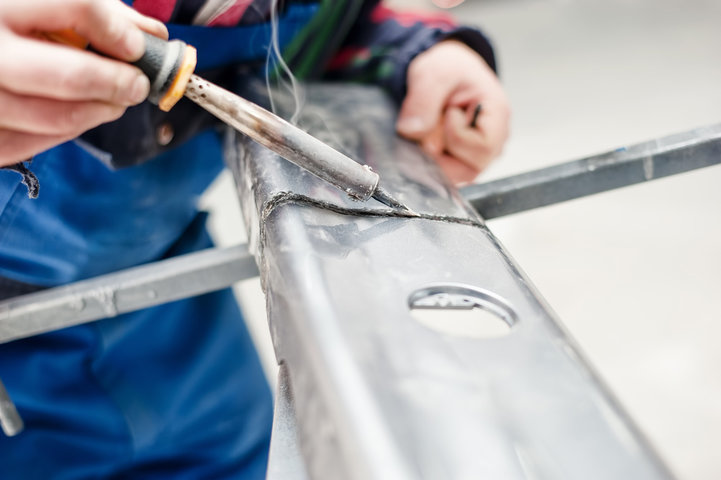
Troubleshooting Common Welding Issues
Plastic welding is a highly effective joining method, but like any process, it can present challenges. Understanding common welding issues and their solutions helps ensure strong, reliable welds. Below, we cover the most frequent problems encountered during plastic welding and how to address them.
Stress Cracking
Causes and Solutions
Stress cracking is one of the most common defects in plastic welds. It occurs when the material experiences stress beyond its limit, often due to improper welding conditions or environmental factors.
Causes:
Overheating or uneven heating during the welding process.
Residual stress in the plastic from improper cooling.
Chemical exposure during or after welding.
Solutions:
Ensure even heating and maintain the correct temperature based on the plastic type.
Allow for adequate cooling time to prevent stress buildup.
Use compatible materials that resist chemical degradation.
Weak Joint Integrity
Prevention and Testing Methods
Weak joint integrity leads to weld failure, typically due to poor bonding between the welded components.
Prevention:
Use the correct temperature, pressure, and welding method suited to the material.
Ensure surfaces are clean and free of contaminants that could interfere with bonding.
Avoid overheating or underheating the weld area, as both can weaken the bond.
Testing Methods:
Perform tensile strength tests to measure the force required to pull the weld apart.
Use visual inspections to detect irregularities like voids or incomplete welds.
Conduct destructive testing on sample parts to ensure weld quality before mass production.
Surface Preparation Mistakes
How to Ensure Clean and Prepared Surfaces
Proper surface preparation is essential for achieving a high-quality weld. Mistakes in this step can lead to poor bonding or contamination, compromising the weld's durability.
Summary of Plastic Welding
Plastic welding offers many advantages. It is financially savvy, quick, and makes solid, super durable securities without additional materials. This technique is flexible, functioning admirably with different thermoplastics, from PVC to ABS. It's fundamental in enterprises like car, aviation, and gadgets.
Later on, plastic welding will see expanded computerization, working on both speed and accuracy. High level materials will take into account more grounded and more specific applications. These patterns will push plastic welding higher than ever, improving assembling effectiveness and execution across ventures.
Reference Sources
Plastic welding
MIG Welding vs TIG Welding
Custom Plastic Injection Molding




















